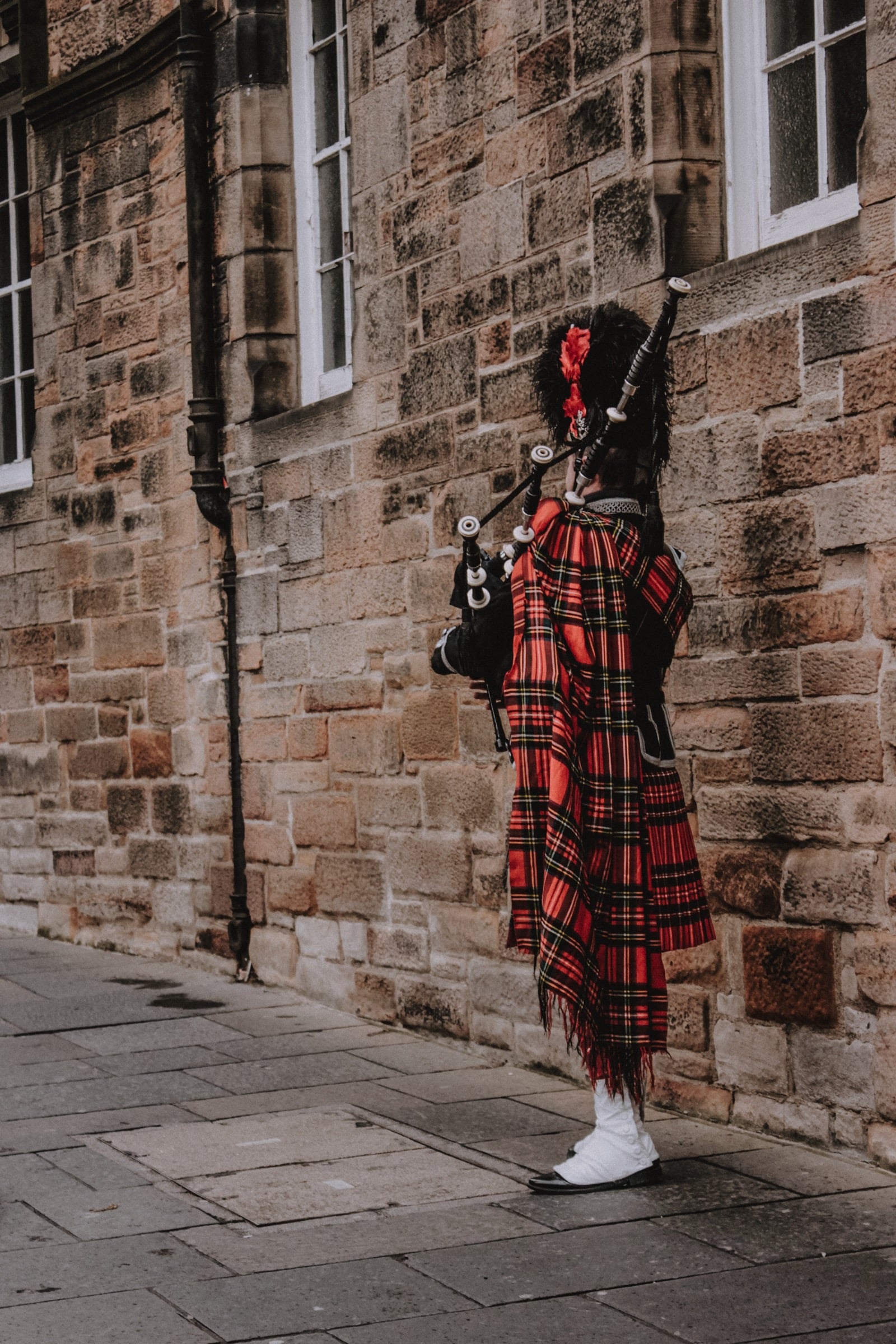
The history of Scotland begins around 12,000 years ago with the arrival of the first human populations in what is now Scotland after the end of the Würm* glaciation. Many artifacts from Stone, Bronze and Iron Age civilizations have been found, but few show traces of writing.
Source: https://fr.wikipedia.org/wiki/Histoire_de_l%27%C3%89cosse
Many peoples have set foot on Scottish soil. There were tribal Celts and ancient painted-faced Picts, Roman conquerors and daring red-haired Vikings, fallen monarchs, great explorers, pensive philosophers, genius inventors and all that they brought with them, as well as the vestiges they left behind, including the incredible traces of their presence and sophistication.
Tartan: History of Scottish Fabric
What particularly characterizes Scotland when it comes to sophistication is the tartan. Tartan has its origins in a centuries-old tradition, as attested by ancient Scottish literature and archaeology. Indeed, an ancestor of this weaving pattern dating from the 3rd century AD has been found.
But what exactly is tartan?
Tartan is a woolen fabric with colored checks, typical of the Celtic peoples and more particularly of Scotland and Scottish clans.
This fabric, which is known for making kilts, can also be worn over the shoulder or used for blankets.
Tartans, which were originally simple decorative fabrics, today often feature designs associated with a specific Scottish clan. They have become over time a sign of recognition and belonging to a clan.
The characteristics of tartan
Tartan is characterized by a pattern consisting of bands of alternating colors with colored woolen threads. Blocks of color repeat vertically and horizontally to form a pattern of squares and lines called the Falkirk sett. It is made of undyed white and brown wool.
Although the name “tartan” today refers to the Scottish fabric of the Highlands, this word was originally used to describe the way in which the thread is woven to create this fabric.
Early tartans were presumably made of simple tiles of 2 or 3 colors and the colors were obtained from plants, roots and berries.
Vegetable dyes and wool qualities of tartans were limited to raw materials available in the region of manufacture.
A rediscovered tradition
For centuries, tartan has been part of the everyday dress of Highlanders.
But, after Charles Edward Stuart’s rebellion, the English invaded Scotland and banned the wearing of tartan in 1747. Fortunately, this traditional fabric survived thanks to an effort to revive it in the early 19th century. Around 1820, we reconstructed the patterns of the tartans from photos and weavers’ notes.
At the end of the 19th century, all the recognized clans again had their tartans as distinctive signs.
Today, this woolen fabric is inseparable from the Scottish national costume worn in various circumstances.
A special day, called Tartan Day, celebrates the historic ties between Scotland and the descendants of Scottish immigrants in North America. This day is celebrated on April 6, the anniversary of the Declaration of Arbroath of 1320.
Originally, tartan was only designed on woolen fabrics. This is also the case with traditional kilts. However, the tartan pattern is now present on all types of clothing regardless of their composition: cotton, synthetic, etc.
Source: https://coeur-ecosse.com/blogs/infos/la-mode-ecossaise

Tartan has been found in the form of sublimation printing on fabric for over twenty years now. It is now possible to order your fabric printed with the tartan model of your choice. There are many sellers. Here are the seven most referenced sellers on Google.
- Scotlandshop: https://www.scotlandshop.com/en/tartan/fabric
- Etsy Canada: https://www.etsy.com/ca-fr/market/tissu_tartan_bleu
- Ma Petite Mercerie: https://www.mapetitemercerie.com/fr/98-tartans
- New Tess: https://shop.newtess.com/fr/pattern-fabric/tartan/
- Wayfair Canada: https://www.wayfair.ca/fr/storage-et-organisation/sb1/tissu-a-la-verge-cossais-et-carreaux-c1863021-a125931~422054.html
- Mercerine: https://www.mercerine.com/tissu-ecossais-et-prince-de-galles-1260
- Amazon: https://www.amazon.ca/-/fr/Tissu-l%C3%A9ger-pattern-tartan-%C3%A9cossais/dp/B07FYPBR3M
*The last of the four great Quaternary glaciations in the Alps